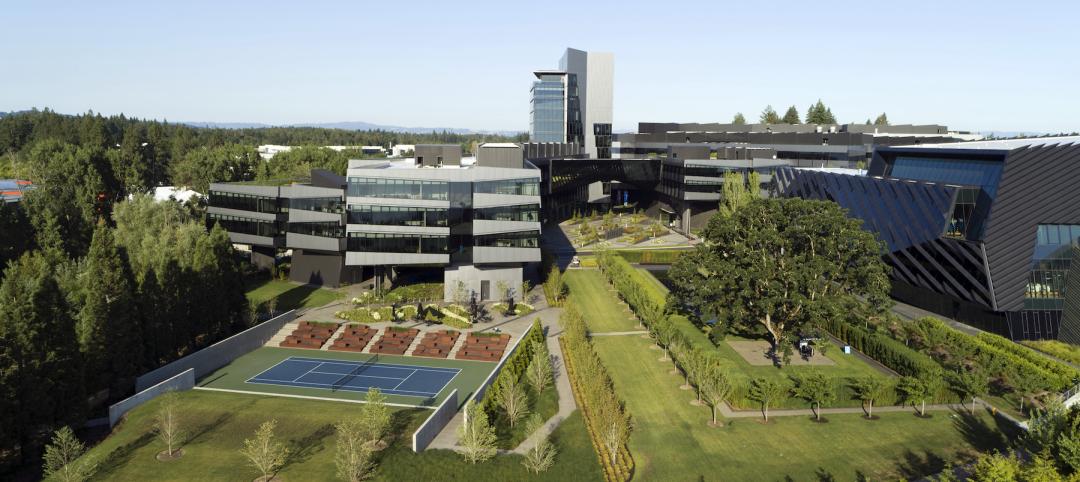The International Code Council (ICC), the American Society of Heating, Refrigerating and Air Conditioning Engineers (ASHRAE), the U.S. Green Building Council (USGBC), and the Illuminating Engineering Society of North America (IES) today announce the launch of the International Green Construction Code (IGCC), representing the merger of two national efforts to develop adoptable and enforceable green building codes. The IGCC provides the building industry with language that both broadens and strengthens building codes in a way that will accelerate the construction of high-performance, green buildings across the United States.
For decades, ICC and ASHRAE have worked to develop codes and standards that become the industry standard of care for the design, construction, operations and maintenance of residential and commercial buildings in the United States and internationally. In coordination with the efforts of ICC and ASHRAE, USGBC has been leading a nationwide green building movement centered on the LEED Green Building Rating System since LEED was launched in 2000. The convergence of these efforts in the IGCC is perhaps the most significant development in the buildings industry in the past 10 years.
Leveraging ICC's unrivaled delivery infrastructure to reach all 50 states and more than 22,000 local jurisdictions and ASHRAE, USGBC and IES's technical strengths, this partnership will accelerate the proliferation of green building codes and standards developed jointly by ICC, ASHRAE and USGBC and IES, across the country and around the globe. The newly launched IGCC establishes a previously unimaginable regulatory framework for the construction of high-performance, commercial buildings that are safe, sustainable and by the book.
A landmark addition to the technical content of the IGCC is the inclusion of ANSI/ASHRAE/USGBC/IES Standard 189.1, Standard for the Design of High Performance, Green Buildings Except Low-Rise Residential Buildings, as an alternate path of compliance. Standard 189.1 is a set of technically rigorous requirements, which like the IGCC, covers criteria including water use efficiency, indoor environmental quality, energy efficiency, materials and resource use, and the building's impact on its site and its community. Standard 189.1 was written by experts representing all areas of the building industry, who contributed tens of thousands of man hours. Developed in a little over three years, the standard underwent four public reviews in which some 2,500 comments were received.
"The emergence of green building codes and standards is an important next step for the green building movement, establishing a much-needed set of baseline regulations for green buildings that is adoptable, usable and enforceable by jurisdictions," said ICC Chief Executive Officer Richard P. Weiland. "The IGCC provides a vehicle for jurisdictions to regulate green for the design and performance of new and renovated buildings in a manner that is integrated with existing codes as an overlay, allowing all new buildings to reap the rewards of improved design and construction practices."
"Bringing together the code expertise of ICC with technical expertise of ASHRAE to create a comprehensive green building code will accelerate our transformation to more sustainable building practices," Gordon Holness, ASHRAE president, said. "ASHRAE is committed to providing the design guidance building designers and engineers need to reduce the energy consumption of buildings."
"The U.S. Green Building Council's mission is market transformation and we've long recognized the need to reach beyond the market leaders served by LEED to accomplish this goal," said Rick Fedrizzi, President, CEO and Founding Chairman of the U.S. Green Building Council. "Broadening the scope of the codes and establishing a higher floor allows us to continue to raise the ceiling, a critical factor in how the building industry is working to mitigate climate change. We are thrilled to see this set of complementary green building codes and standards; our organizations working collaboratively will advance green building nationwide in a way that was never before possible. "
"IES is pleased to support the collaborative efforts of the organizations which demonstrate expertise in code and technical standards development in this comprehensive green building code," said Rita Harrold, IES Director of Technology. "IES looks forward to ongoing guidance for sustainable building practices."
On Monday, March 15, ASHRAE, IES and USGBC will join ICC at its Washington, D.C., headquarters as they and their co-authors (the American Institute of Architects and the American Society for Testing Materials) launch the IGCC. On Monday, Standard 189 .1 and the IGCC will be available for wide distribution, providing much-needed content, code language, and vision for more safe and sustainable future. The organizations are also working together to advance related education and advocacy efforts to promote adoption, enforcement and compliance with the IGCC codes that will pave the way for green buildings and neighborhoods, while creating jobs and strengthening the economy.
For more information on IGCC: http://www.iccsafe.org/cs/IGCC/Pages/default.aspx and on Standard 189.1: www.ashrae.org/greenstandard.
Related Stories
Codes and Standards | Aug 3, 2022
Some climate models underestimate risk of future floods
Commonly used climate models may be significantly underestimating the risk of floods this century, according to a new study by Yale researchers.
| Aug 3, 2022
Designing learning environments to support the future of equitable health care
While the shortage of rural health care practitioners was a concern before the COVID-19 pandemic, the public health crisis has highlighted the importance of health equity in the United States and the desperate need for practitioners help meet the needs of patients in vulnerable rural communities.
Reconstruction & Renovation | Aug 3, 2022
Chicago proposes three options for Soldier Field renovation including domed stadium
The City of Chicago recently announced design concepts for renovations to Soldier Field, the home of the NFL’s Chicago Bears.
Codes and Standards | Aug 2, 2022
New tools help LEED projects reach health goals
The U.S. Green Building Council now offers tools to support the LEED Integrative Process for Health Promotion (IPHP) pilot credit.
Market Data | Aug 2, 2022
Nonresidential construction spending falls 0.5% in June, says ABC
National nonresidential construction spending was down by 0.5% in June, according to an Associated Builders and Contractors analysis of data published today by the U.S. Census Bureau.
K-12 Schools | Aug 1, 2022
Achieving a net-zero K-12 facility is a team effort
Designing a net-zero energy building is always a challenge, but renovating an existing school and applying for grants to make the project happen is another challenge entirely.
Healthcare Facilities | Aug 1, 2022
New Phoenix VA outpatient clinic is one of the largest veteran care facilities in the U.S.
The new Phoenix 32nd Street VA Clinic, spanning roughly 275,000 sf over 15 acres, is one of the largest veteran care facilities in the U.S.
Codes and Standards | Jul 29, 2022
Few projects and properties are being built beyond code
Clients and architects disagree on how well building to code provides resilience, according to a recent report by the American Institute of Architects (AIA) in partnership with Owens Corning.
Headquarters | Jul 29, 2022
Nike HQ’s newest, largest structure: the Serena Williams Building
In Beaverton, Ore., the new Serena Williams Building, at just over 1 million square feet, is the largest structure at Nike World Headquarters.
| Jul 28, 2022
Fanning Howey hires Dennis Bane, AIA, as Project Executive
Fanning Howey, an architecture, interiors and engineering firm specializing in learning environments, has hired Dennis Bane, AIA, ALEP, to serve as a Project Executive for the firm’s Indianapolis office.
















